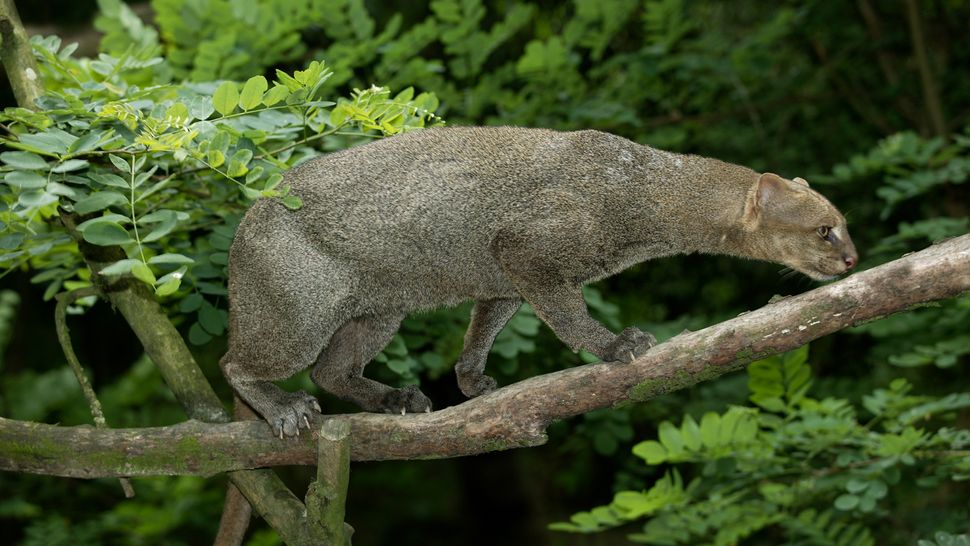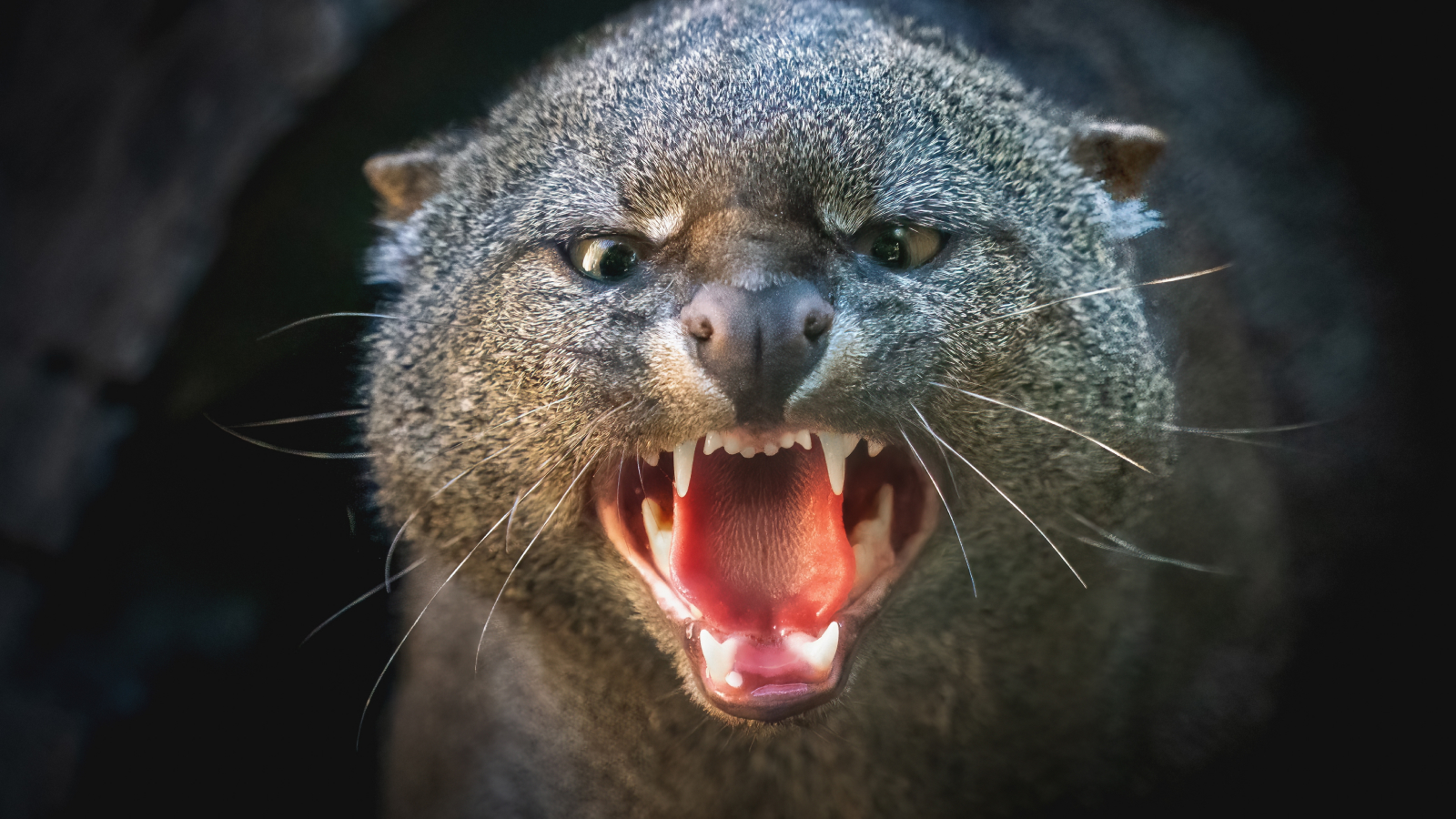The jaguarundi, also known scientifically as Puma yagouaroundi or Herpailurus yagouaroundi, is a fascinating small feline native to the Americas, ranging from Mexico to central Argentina. Despite its name suggesting a connection to jaguars, it’s more closely related to pumas, albeit distinct in appearance and much smaller in size, weighing between 7 to 15 pounds (3 to 7 kg).
These peculiar cats have elongated bodies, short legs, and rounded, flattened heads with small ears, giving them a resemblance to otters or weasels rather than typical wildcats. They thrive in lowland habitats with dense vegetation like scrublands, swamps, and forests, where they hunt a diet consisting of reptiles, birds, frogs, and fish.

What sets the jaguarundi apart is its diverse vocalizations. While most wildcats communicate through a limited range of sounds like growls or purrs, the jaguarundi is known to produce at least 13 different vocalizations. These include purring, whistling, chirping similar to birds, screaming, yapping, and chattering. These vocalizations serve various purposes such as communication, territory marking, and mate attraction.
Researchers at the Rare Species Conservation Centre in Kent, England, observed jaguarundis closely, noting their complex vocal behaviors. They found that jaguarundis use specific calls like “short whistles” for attention-seeking, responded to by others with a “peep.” They greet each other with “long whistles” or chattering, and female adults purr to call their kittens. Similar to domestic cats, purring indicates contentment while hissing or spitting signals aggression or warning.
Overall, the jaguarundi’s unique appearance and extensive vocal repertoire highlight its adaptation to a secretive, solitary lifestyle in dense habitats, making it a truly remarkable member of the feline family.
